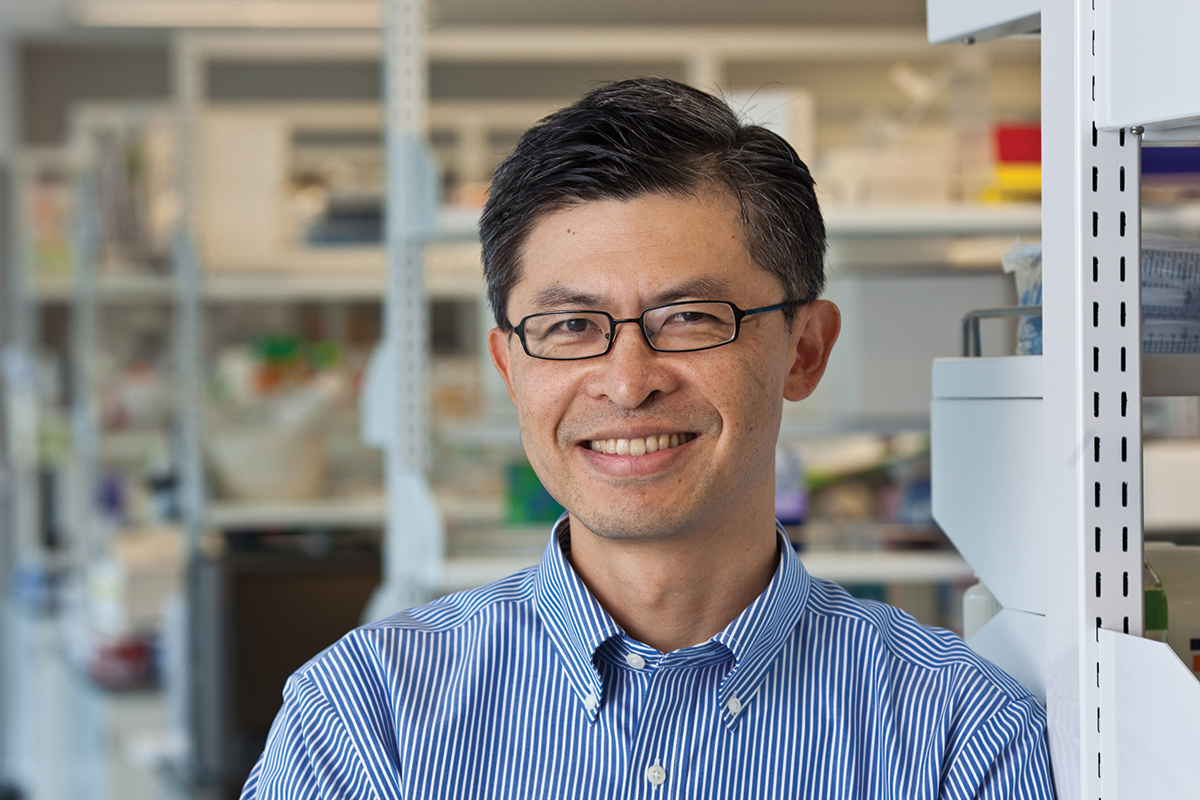ISB Q & A: Sui Huang, MD, PhD, Professor at ISB
 isbscience.org/news/2015/03/19/isb-q-a-sui-huang-md-phd-professor-at-isb/
isbscience.org/news/2015/03/19/isb-q-a-sui-huang-md-phd-professor-at-isb/
Sui Huang is a Professor at ISB. He reflects on this year’s symposium topic, “Tipping Points”:
Q: How do you define “tipping point” and why is it important to understand these transitions?
Sui: In brief, when a complex system undergoes a sudden jump-like global transition triggered by a subtle, gradual and continuous change within a particular component of it, that system may go through a tipping point or “critical transition.”
More specifically, a complex system – such as the climate, weather, or an ecosystem – consists of many interacting components or processes that interact with one another in a well-orchestrated manner such that the system as a whole can be characterized by a few “global” parameters such as temperature in the atmosphere or algae biomass in a lake. These global features are quite stable and do not undergo large changes. The system is at an equilibrium due to the collective contribution of many interdependent factors. Despite the fact that these global features are stable and resulting from a network of underlying factors, a particular change in one or more of these factors can slowly destabilize the entire system, pushing it out of balance. In this process, the system may reach a sort of “cliff” in a mathematical sense, or a “point of no return” upon the crossing of which the system may be attracted to a new equilibrium. This is manifest as a sudden, drastic change in one of the global properties such as a large shift of climate or of the trophic status of a lake. Since such major changes of complex systems can have catastrophic consequences for living organisms that depend on it, while the causative factor is only undergoing relatively minor changes, they are important. Because the tipping point of the system results from a particular concerted rearrangement of the underlying interacting factors, tipping point behavior may be preceded by subtle changes, in the form of “Early Warning Signs.” Therefore, studying these EWS is of great practical utility.
Q: What’s an example of a state transition or tipping point?
Sui: The simplest system that exhibits a tipping point behavior is perhaps the freezing of water or a crystallization: upon slow change in temperature or concentration of minerals in a solution, suddenly, at a critical value of temperature or concentration, the material solidifies to ice or a crystal — a sudden jump in global appearance.
In living systems, we also see that many processes similarly do not follow a smooth gradual change. Not always does “Natura non facit saltus” (Nature does not make a jump) as Aristotle taught us. In reality many processes that alter complex systems of interdependent components occur by creeps and jerks – long, slow gradual changes interrupted by jump-like transitions, as seen in evolution. The gradual rise in hormone systems that trigger gender switching in animals, or the clinical eruption of a latent disease are other examples of gradual causation connected to an either/or outcome. Or the exponential virality of a video on the Internet once some critical mass of interest has been achieved. But not every threshold-like phenomenon is a tipping point, although the term is widely and loosely used to refer to all kinds of sudden changes or the crossing of a red line.
Q: How is ISB using systems biology to understand tipping points?
Sui: Systems biology teaches us that causation of a change in a complex system is not as simple as “A causes B.” We have entire networks of causations. Tipping point behavior is a hallmark of such complex systems. More generally, it arises in systems in which the component parts engage in (mutual) interactions that mathematically can be formulated as non-linear causal relationships, giving rise to the potential of multiple quasi-stable equilibria – so called multi-stability. As we now begin to figure out the wiring diagrams of complex molecular networks that run living systems, which is a major focus of systems biology, we learn to characterize these as entities that can exhibit tipping point behavior.
Q: How will this research or approach help humans and the environment?
Sui: Awareness of tipping point behavior will help to better understand the natural divide between a balanced state and a state of dysfunction, between wellness and disease, which are often separated by a tipping point. These concepts can be applied to both human and environmental health and help to address these research questions: Which change in the network components drives the system towards the tipping point? What are the early-warning signs? How can we delay or even prevent a shift towards the tipping point? These are all questions of utmost practical significance.





